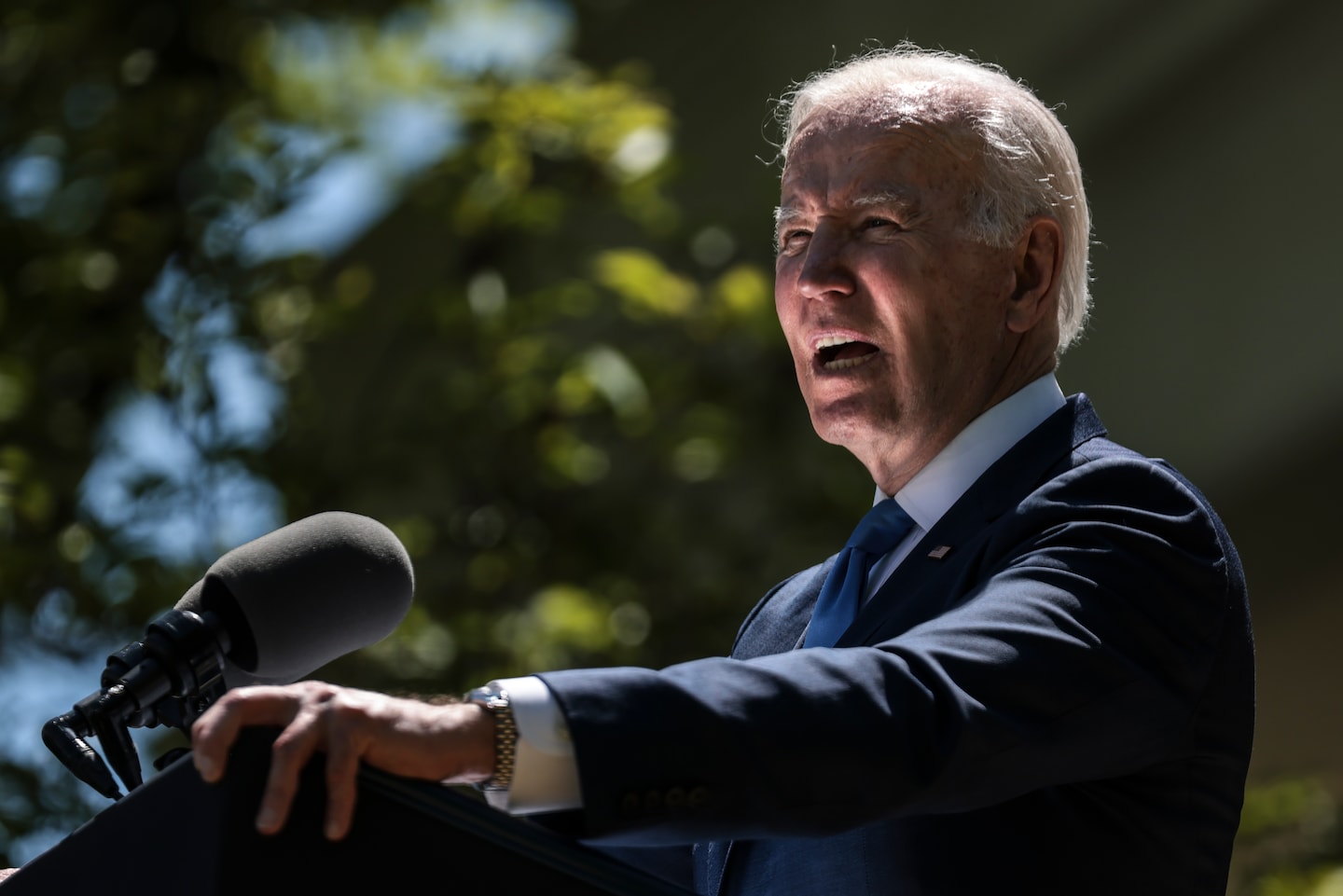More than 11.5 million households have already signed up to claim government subsidies.
The 100 megabit-per-second service is fast enough for a family to work from home, complete schoolwork, browse the Internet and stream high-definition movies and TV shows, the White House said.
“High-speed Internet is not a luxury any longer. It’s a necessity,” President Biden said in remarks announcing the program at the White House Rose Garden.
Households can qualify for the subsidies, called the Affordable Connectivity Program, if their income is at or below 200 percent of federal poverty guidelines, a member of the household participates in certain federal anti-poverty initiatives — including Medicaid, Supplemental Nutrition Assistance Program, federal housing assistance, Pell Grant tuition assistance, or free or reduced-price school meals — or if the household already qualifies for an Internet provider’s low-income service program.
Consumers can check whether they qualify for discounted service at getinternet.gov, or by calling (877) 384-2575.
Biden, during his 2020 campaign and in negotiations for the bipartisan infrastructure bill, has made Internet access a high priority, especially for rural America and low-income consumers. A 2021 study by the Pew Research Center found that although access to broadband, the most reliable form of Internet connectivity, has increased among rural residents in the past decade, rural communities still lag well behind others in terms of service.
Roughly 7 in 10 adults in rural areas reported having home broadband access in 2021, Pew found; the same proportion had a desktop or laptop computer. Eight in 10 had a smartphone. Rates for urban and suburban households were between 5 and 10 percent better.
But in urban and suburban communities, the cost of Internet service has long been a bigger obstacle than network access, experts say. That has prevented families from getting online to access telehealth service, participate in educational activities or enjoy entertainment.
It has led some individuals to go to great lengths to access the Internet. Public education officials speak often of students clustered at fast-food restaurants or coffee shops equipped with free WiFi to complete assignments because they lack Internet connectivity at home. During the pandemic, public libraries set up stations for elderly residents to access remote health care, allowing patients to communicate with doctors, but without the privacy to which many patients are entitled, health-care professionals say.
“The cost of broadband is a driver of the digital divide,” said Chris Lewis, president and chief executive of the advocacy group Public Knowledge. “And that’s in all types of communities, urban, rural, suburban, you name it. … Look at the reaction during the pandemic to people being upset that children in schools did not have access to broadband. That was not a rural issue. That was an issue in every community. And even if a family could afford broadband and their kids were doing school over broadband, they knew someone in their school, one of their kids’ friends, who was not connected to quality broadband.”
Biden’s infrastructure package reserved $65 billion to improve the nation’s broadband network. Most of that funding will go to states for projects directed by local policymakers, but a $14 billion pool was set aside for Internet subsidies.
The discount program faces early hurdles because the households it is meant to serve are not online and therefore more difficult to reach. The White House said it would partner with other federal agencies, state and city governments and charitable groups to spread the word.
But some experts worried Monday about the longevity of the program. By some estimates, the money for subsidies will run out by 2025, potentially leaving millions of families with a brand-new monthly bill after three years of free, or significantly cheaper, service.
“If we’re going to subsidize broadband, we need to bring it down to $0,” said Christopher Ali, associate professor of media studies at the University of Virginia and author of the 2021 book “Farm Fresh Broadband.” “For a lot of families, even $10 a month is expensive. If we look at it by the numbers, there are more people who can’t afford Internet access than people who don’t have access to a network.”
But the program raised questions among experts on how Internet service providers have priced their products. The discounts apply only to low-income customers, but providers often market their products to other individuals at significantly higher prices. That raises issues of price transparency, experts said, even as Monday’s announcement is a positive step for increasing Internet access.
“It will hopefully get Comcast and AT&T and other broadband providers more customers. That’s probably a good thing for them,” Lewis said. “Are they getting customers that are a loss leader for them or customers that make money for them? We don’t know because no one studied the pricing and competition in the marketplace.”
